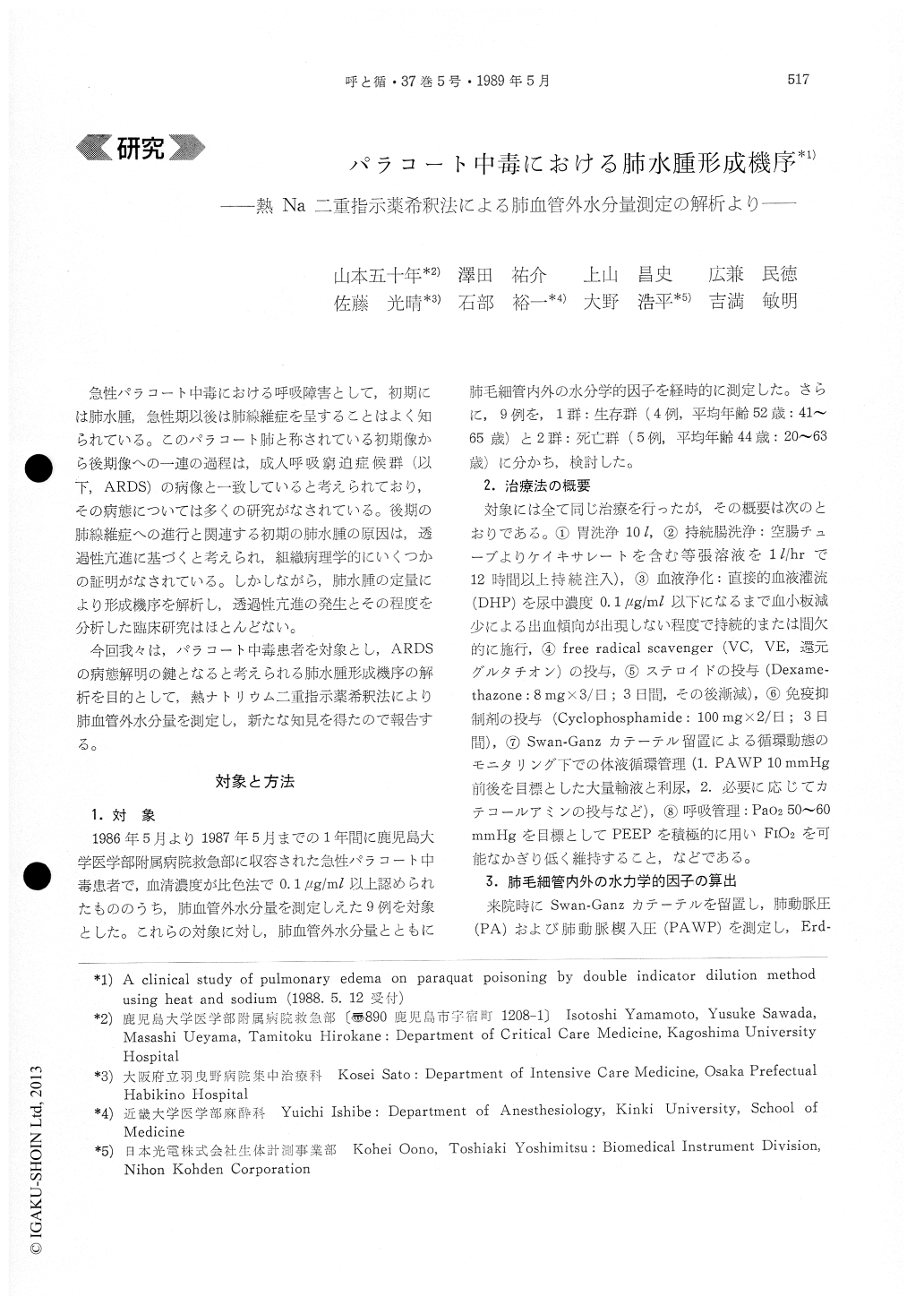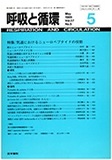Japanese
English
- 有料閲覧
- Abstract 文献概要
- 1ページ目 Look Inside
急性パラコート中毒における呼吸障害として,初期には肺水腫,急性期以後は肺線維症を呈することはよく知られている。このパラコート肺と称されている初期像から後期像への一連の過程は,成人呼吸窮迫症候群(以下,ARDS)の病像と一致していると考えられており,その病態については多くの研究がなされている。後期の肺線維症への進行と関連する初期の肺水腫の原因は,透過性亢進に基づくと考えられ,組織病理学的にいくつかの証明がなされている。しかしながら,肺水腫の定量により形成機序を解析し,透過性亢進の発生とその程度を分析した臨床研究はほとんどない。
今回我々は,パラコート中毒患者を対象とし,ARDSの病態解明の鍵となると考えられる肺水腫形成機序の解析を目的として,熱ナトリウム二重指示薬希釈法により肺血管外水分量を測定し,新たな知見を得たので報告する。
We studied the formation of pulmonary edema on 9 patients with paraquat poisoning using thermalsodium double indicator dilution method for the measurement of lung water.
In survivors group (n=4) extravascular thermal volume (EVTV) was not almost changes. In non-survivors group (n=5) EVTV increased about three times as much as that in survivors group on 32 hours after admission. EVTV was correlated with PCP-PCOP in both survivors group and non-survivors group (n=64, r=0.665, p<0.01). But EVTV in non-survivors group was higher than that in survivors group within same PCP-PCOP. In non-survivors group ΔEVTV/Δ (PCP-PCOP) in 24 hours after ad-mission was correlated with initial PCP-PCOP (r= O.984, p<0.01). We propose that the formation of pulmonary edema on paraquat poisoning is mainly due to the increased capillary permeability, influenced by the increased pressure gradient of capillary bar-rier.

Copyright © 1989, Igaku-Shoin Ltd. All rights reserved.


